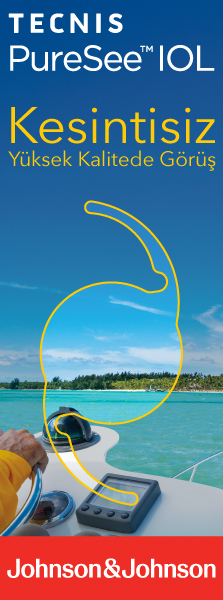2Assoc. Prof. MD, Department of Ophthalmology, Sakarya University Training and Research Hospital, Sakarya, Türkiye
3Prof. MD, Department of Ophthalmology, Sakarya University Training and Research Hospital, Sakarya, Türkiye DOI : 10.37844/TJ-CEO.2024.19.12 Purpose: The purpose of the study was to report the long term results of implantation of a foldable posterior chamber intraocular lens (PCIOL) into the anterior chamber (AC) in aphakia treatment.
Materials and Methods: Patients with aphakia who underwent foldable PCIOL implantation into the AC were included in the study. Haptics of PCIOL were passed to PC through two iridectomies. Preoperative and postoperative best corrected visual acuity (BCVA), postoperative lenticular astigmatism, perioperative and postoperative complications were recorded. Anterior chamber depth (ACD) was measured by ultrasonic biomicroscopy at 1 year.
Results: Fifty-one eyes of 51 patients were included in the study. Of these eyes, 21 were examined for 10 years postoperatively. The mean preoperative BCVA was 1.06 ± 0.68 LogMAR and the mean postoperative BCVA was 0.49 ± 0.44, 0.49 ± 0.44, and 0.45 ± 0.39 LogMAR at postoperative 1, 2, and 10 years, respectively. The mean lenticular astigmatism was 0.96 ± 0.78 D at 1 year. Glaucoma in 11 eyes, retinal detachment (RD) in 3 eyes, cystoid macular edema (CME) in 6 eyes, corneal decompensation in 11 eyes, and haptic dislocation in 7 eyes were observed postoperatively. The mean ACD was measured as 3.03 ± 0.29 mm at 1 year postoperatively.
Conclusions: We obtained comparable visual outcomes to other IOL implantation techniques in aphakia treatment. The advantage of using the foldable PCIOL to treat aphakia was the lack of the need for special design IOLs. The technique can be useful in aphakia treatment especially in developing countries.
Keywords : Absence of capsular support, absence of zonular support, aphakia, foldable intraocular lens, iris sutured intraocular lens




